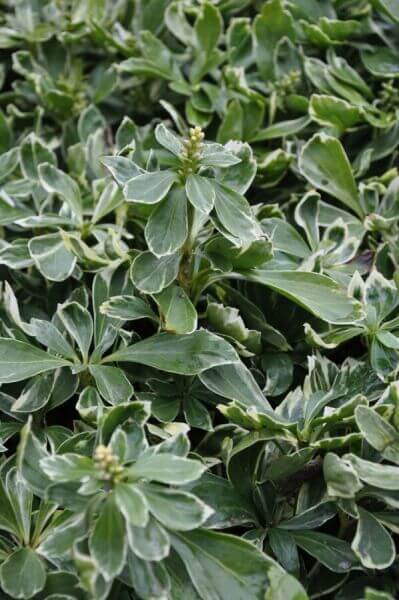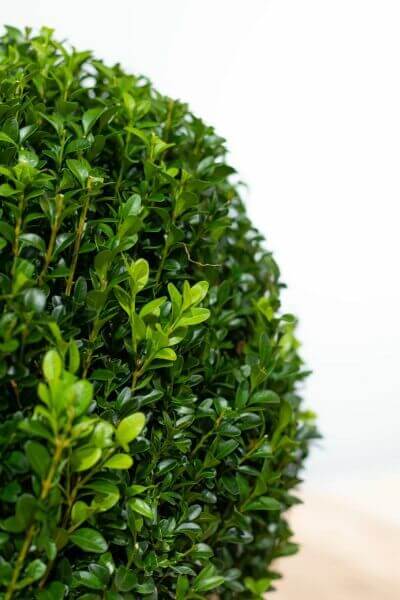Best Hedging Plants For Spring Flowers
Best Hedging Plants For Spring Flowers
Blog Article
Best Hedging Plants For Flowering Hedges
Improve your garden's appeal with lush hedge ranges such as Yew (Taxus), Thuja, Laurel, Photinia, and Bamboo, celebrated for their structural stability and environmental advantages.
Yew and Thuja offer evergreen coverage and winter durability, while Laurel provides fast development and broad, aromatic leaves.
Photinia includes seasonal beauty with its vibrant red foliage, and Bamboo lends a low-maintenance, serene ambiance.
These hedges improve air quality, decrease noise, and create tranquil, private spaces.
Proper planting, spacing, and maintenance ensure vigorous growth and ecological harmony.
Explore how these lavish ranges can raise your garden's appeal and wellness.
Key Takeaways
Transform Your Garden With Lush Hedge Varieties
- Select Yew for its dense, evergreen development and unequaled durability.
- Go with Laurel for its fast development and broad leaves, ensuring fast personal privacy.
- Select Photinia for its dynamic seasonal foliage, which turns a striking dark red.
- Utilize Bamboo for a low-maintenance, winter-hardy hedge with aesthetic appeal.
- Area plants 2-3 per meter and prune frequently for ideal growth and health.
Popular Hedge Plants
When transforming a garden with lavish hedge ranges, it's vital to consider popular hedge plants such as Yew, Thuja, Laurel, and Photinia due to their unique attributes and benefits.
Yew (Taxus) is highly respected for its durability and dense, green growth, making it a prime option for withstanding landscapes.
Thuja is noted for its evergreen foliage and robust winter season resilience.
Photinia includes seasonal vibrancy with red leaves that darken gradually, producing vibrant visual appeal.
Laurel provides rapid development and fragrant, broad leaves, perfect for quick privacy.
Furthermore, Bamboo is an excellent option for ambiance, using a low-maintenance, winter-hardy choice that boosts the garden's aesthetic with its classy, swaying walking sticks.
These choices accommodate a range of horticultural needs and choices.
Advantages of Garden Hedges
Garden hedges provide a multitude of advantages, making them an important addition to any landscape. These natural barriers are affordable to carry out and provide considerable wind defense, enhancing air flow and adding to noise decrease. The thick foliage of hedges like Thuja and Beech ensures privacy by blocking presence, creating a remote and serene environment.
Hedges also play an important function in microclimate regulation, providing a steady environment that fosters plant growth and minimizes temperature level changes. Their elaborate leaf structures filter pollutants, enhancing air quality and contributing to a much healthier garden community.
Moreover, hedges master noise decrease, soaking up and deflecting acoustic waves to lower ambient sound levels. This double performance of supplying both acoustic and visual personal privacy boosts the total harmony and visual appeal of any garden.
Planting and Upkeep Tips
For an effective hedge, careful preparation of the planting location is vital. Make sure the soil has appropriate pH and drainage to support strong root development.
Area the plants appropriately for the chosen types. Water the hedge often throughout its initial growth phase, changing as required with seasonal modifications.
Execute a methodical pest control and disease avoidance method, utilizing chemical or organic treatments when essential. Routinely examine for aphids, termites, and fungal infections.
Apply mulch to keep moisture and suppress weeds. Seasonal pruning promotes thick development and air flow, essential for plant health.
Following these standards will assist you cultivate a vibrant, well-maintained hedge that boosts the charm of your garden.
Spacing and Trimming Standards
Spacing and Trimming Standards
Appropriate spacing and trimming are important for cultivating healthy, visually appealing hedges. Appropriate spacing guarantees each plant receives sufficient nutrients, light, and air flow.
Follow these guidelines for optimum hedge maintenance:
- Spacing: Position hedge plants 2-3 plants per meter to motivate robust growth.
- Pruning Strategies: Regular pruning is important for keeping preferred hedge height and shape. Cut new development in summer season and cut back older wood throughout winter.
- Seasonal Care: Change cutting schedules and techniques according to seasonal requirements to make sure plant health.
- Hedge Height: Routinely display and trim to keep the desired hedge height and accomplish consistent aesthetic appeals.
Sticking to these actions will ensure your hedge flourishes, boosting both the appeal and functionality of your garden.
Selecting the Right Hedge
Picking the Right Hedge
Picking the appropriate hedge involves examining aspects such as mature height, foliage density, and environmental durability. Effective hedge plant choice needs understanding each species' growth qualities and site-specific flexibility.
For example, Yew (Taxus) offers excellent longevity and dense development, while Thuja is significant for its winter season strength. In addition, thinking about maintenance requirements is crucial; fast-growing species like Laurel or Privet demand regular trimming, whereas low-maintenance options like Bamboo or Ivy might be preferable for those seeking minimal upkeep.
Ecological aspects such as soil type, light schedule, and wetness conditions need to likewise assist the selection procedure. This careful method guarantees the selected hedges will flourish, offering both aesthetic and functional advantages to the garden landscape.
Delivery and Planting Guidance
To ensure your hedge plants thrive, they need to be delivered by specialized carriers and planted immediately upon arrival.
Follow these important actions for successful planting:
- Soil Preparation: Enhance the soil with raw material to improve drain and nutrient material.
- Planting Depth: Create a trench twice the width and equivalent to the depth of the root ball.
- Watering Methods: Water thoroughly after planting, keeping the soil regularly damp however not filled.
- Mulching: Apply a layer of mulch to maintain moisture and reduce weeds.
Client Support and Service
Given the vital function of timely help in horticultural pursuits, our client assistance team is readily available six days a week through telephone, e-mail, and social media to use professional guidance and promptly deal with any issues. Their commitment to fast response times makes sure customer fulfillment by dealing with inquiries related to plant health, ideal planting approaches, and maintenance schedules.

-------------------
Within 24 hours
Within 48 hedge plants hours
6 days a week
This comprehensive support group, enhanced by an outstanding 9.3/ 10 customer ranking, highlights our dedication to enhancing the gardening experience for every single customer.
Frequently Asked Concerns
For How Long Does It Take for Hedge Plants to Develop?
Hedge plants typically need one to three years to become completely established, with the specific duration differing by species and growing conditions.
Reliable care during this important period is necessary for robust growth. Constant watering, vigilant weed control, and suitable fertilizer application are pivotal in promoting strong root advancement.
For example, fast-growing types like Laurel might establish faster, while slower-growing varieties such as Yew may take longer. Diligent upkeep speeds up the establishment procedure, leading to healthy and thick hedges.
What Are the Best Hedge Plants for Privacy?
The concern of the best hedge plants for privacy includes examining evergreen and deciduous options.
Evergreen hedges like Thuja, Laurel, and Cypress supply year-round protection, ensuring constant personal privacy.
In contrast, deciduous hedges such as Beech offer seasonal privacy, shedding leaves in cooler months.
Secret maintenance suggestions for personal privacy hedges consist of routine trimming, fertilizing in spring, and proper spacing-- usually 2 to 3 plants per meter.
In addition, constant watering and diligent weed removal are essential for promoting healthy, dense development.
Can Hedge Plants Bring In Wildlife to My Garden?
Yes, hedge plants can bring in wildlife to your garden by supplying essential benefits like shelter, food, and nesting sites, thereby enhancing local biodiversity. Yew, holly, and laurel are exceptional for bring in birds, while ivy supports a range of bugs.
Nevertheless, it is essential to keep in mind that there are some disadvantages, such as increased maintenance to manage bugs and routine maintenance. Thoroughly choosing and preserving hedge varieties can help stabilize these advantages and downsides, ultimately fostering a sustainable and lively community in your garden.
Are There Any Flowering Hedge Plants Available?
Yes, there are flowering hedge plants readily available that can boost the charm of your garden.
For example, Elaeagnus, likewise called Olive Willow, produces fragrant white flowers in the fall, adding a touch of sophistication.
Photinia, another popular option, showcases vibrant red leaves that grow into an abundant green, creating a dynamic visual result throughout the seasons.
To guarantee these plants thrive, it's necessary to practice appropriate pruning techniques and seasonal upkeep, such as trimming brand-new development in the summer and cutting down in the winter.
These procedures will help keep the health and aesthetic appeal of your blooming hedges.
How Do I Avoid Insects in My Hedge Plants?
To prevent insects in hedge plants, employ natural insect control methods and preserve proper hedge care. Present beneficial bugs like ladybugs, which prey on hazardous bugs, to produce a well balanced ecosystem.
Frequently inspect your hedges for signs of problem and quickly eliminate any affected parts to prevent the spread. Make sure the health of your hedges by applying well balanced fertilizers and supplying adequate water.
Use mulching to maintain soil moisture and appropriate spacing to lower plant tension and promote robust growth. These practices collectively assist in minimizing insect problems and keeping a healthy hedge.
Conclusion
In essence, choosing the right hedge varieties such as Yew, Thuja, and Laurel can change any garden into a serene haven. These plants provide year-round greenery, improve visual appeal, and deal useful advantages like sound reduction and wind protection.
Proper planting methods, precise spacing, constant watering, and seasonal cutting are crucial for optimum development.
Reliable delivery services and expert customer support ensure a seamless experience from purchase to planting, making it simpler than ever to elevate your outdoor area.
Garden hedges use a plethora of advantages, making them an important addition to any landscape. These natural barriers are cost-efficient to carry out and supply considerable wind security, improving air flow and contributing to noise reduction. The thick foliage of hedges like Thuja and Beech makes sure personal privacy by obstructing visibility, creating a secluded and serene environment.

Pruning Strategies: Regular pruning is important for keeping wanted hedge height and shape. Trim new growth in summer season and cut back older wood throughout winter season.
Report this page